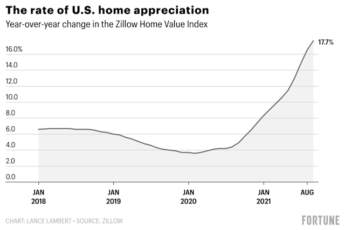A weak country can join the Eurozone by switching its currency to EUR and staying within certain spending limits. This will not affect the value of Euros in the pockets of other Eurozone members. In addition, it may encourage tourists to buy holiday homes and workers to migrate to a richer country. This process is known as ‘dollarization’ or technical currency substitution. However, the effects of currency substitution can have a negative impact on the country’s economy.
Redenomination
What happens if a poor country changes to the Euro? The main reason is that it makes the country more competitive in global markets. The devaluation will have minimal effect on the rich, who have already invested their money abroad. On the other hand, the common people will suffer due to higher costs and delays in doing business. This may increase the competitive force in inland areas, and may encourage visitors to purchase holiday homes in richer countries.
Stronger euro discourages exports
A weaker euro may not benefit Germany, champion of European exporters. Instead, it may benefit poorer nations on the euro zone periphery. Thomson Reuters data suggests that German exports do not benefit as much from a weaker euro as exports from other countries. Those countries export goods with lower value, and a weaker euro might benefit them more. But how does a weaker euro affect trade between poor countries?
In one example, a French company exported $10 million in goods and services in euros at $1.37. This resulted in a loss of EUR7.3 million. The same story applies to Ireland, Portugal, and Greece, which also received bailouts. However, many other euro zone nations have weaker links to the currency. For instance, Germany exports the most goods, and the stronger euro discourages exports to the country.
Bank recapitalization in national currency
Central bank recapitalization has its own risks. It can be a source of large-scale losses. It can also make a central bank more vulnerable to sudden reversals of capital flows, especially short-term portfolio investment, which can be more easily reversed than foreign direct investment. Here are some of the risks of bank recapitalization in national currency of poor countries. A bank recapitalization in national currency can be beneficial if the central bank is willing to assume these risks.
Economic consequences of a failed euro
If the euro were to fail, there would be serious implications for the Schengen Area. This area is named after the 1995 Schengen Agreement, which allowed for free movement of goods, services, and capital within the eurozone. But not all of the EU’s members are part of Schengen, and a failed euro would have consequences not only for countries inside the zone, but for countries outside as well.
If the euro were to fail, the member countries would have to reintroduce their national currencies and set their own appropriate exchange rates for global trade. The market would not like that much uncertainty, so it would react negatively. However, it could be beneficial for the global economy if Europe can start growing again. The eurozone has lagged behind other regions in GDP growth for several years, and a successful post-euro world would boost markets worldwide.
In Europe, countries in Eastern Europe were particularly hard hit, with youth unemployment exceeding 40 percent in some countries. The withdrawal of foreign capital from these countries also resulted in depreciation of their currencies. As a result, many economists blame the euro for this underperformance. In the United States, the unemployment rate is higher than in the eurozone, but Italy’s economy is smaller.
Portugal is one of the first countries to identify the symptoms of a sovereign debt crisis. Its economy has been experiencing a severe economic slump for over 12 years, and is growing at a much lower rate than the US or Japan during the Lost Decade. Despite this, the Greek economy has seen some of its worst slump since the Great Depression, and other poor countries have been hit by austerity packages. Despite the lack of growth, joblessness and hopelessness are common human realities. As a result of these consequences, a spike in suicide rate is not unlikely.
Despite all of the warning signs, many developing countries have already made significant macroeconomic progress over the past years. This means that they are better equipped for a potential crisis than they were in the past. The measures they’ve taken have pushed their economies towards regional co-operation. The OECD and numerous academic powers have been urging international bodies to step in and help these countries. As a result, they are doing everything they can to avoid the worst outcomes. But the economic consequences of a failed euro for a poor country are still unknown.
A herd of elephants is structured around a female matriarch, the oldest female. A herd typically consists of nine to 11 elephants, but it can sometimes break off to form new herds if resources are scarce. A herd’s matriarch determines the ranging patterns of the herd, and she is respected by all of the females. This article explores the factors that go into the selection process.
They provide stability
In an elephant family, the matriarch and her offspring form a stable core, which spreads out and expands as the elephants get older. The eldest female matriarch is the family’s guiding force, and the hierarchy within the family is determined by age, leadership, and experience. Family members cooperate to care for calves, and they may be related to other females in the family.
Matriarchs provide stability for elephants, as they help the males grow up and become stable. Male elephants typically associate with other bulls, but eventually leave the family unit. Male elephants form matriarchal groups of one to three members, with a hierarchy. Bulls, however, do not seek leadership roles; they serve as stabilizing members of the group. When males enter and leave a family group, the hierarchy is reestablished.
Matriarchs also benefit from actively maintaining their followers. Traveling at the back of the group allows a matriarch to monitor the activities of the family members. If male elephants move forward, they may not be as effective. Older male elephants may be more passive and tolerate active followers. Nevertheless, a matriarch’s active leadership is essential to the group’s overall stability. In the presence of predators, matriarchs provide stability to elephant families.
Matriarchs provide social and psychological benefits for elephants. Elephants are highly social animals, with strong relationships among females and with non-kin. The female elephants in these communities form cooperative coalitions and care for their offspring. Matriarchs can also defend their young from predators. Despite these challenges, elephants remain a valuable part of our environment. And it only makes sense that elephants have matriarchs to provide this vital support.
In fission-fusion populations, matriarchs play a crucial role in determining the status of matriarchs. The ability to differentiate between matriarchs allows them to direct group response based on the level of social threat perceived. It allows individual matriarchs to direct the group’s overall response with minimum cost and risk. And, when a matriarch is able to differentiate between male and female callers, they can determine who is in a high or low threat situation.
They show compassion for all members of the herd
Elephants are known to show compassion towards one another. For example, the mother elephant would never leave her baby elephant alone in the herd. This empathetic instinct is present in all members of the herd, and can even be seen when the herd turns back to help the injured animal. Besides showing compassion towards one another, elephants are also social creatures and exhibit empathy for one another. When a herd is endangered, they may even come to a human’s rescue.
The elephants’ compassion for one another is apparent in the way they grieve after the loss of a member of the herd. After an offspring dies, the elephant mother tends to act lethargic for a few days. During these days, the elephants protect the dead body from predators. A National Geographic video shows elephants visiting the body of the matriarch and observing how they touch the deceased animal’s body and stand silently around it. Scientists observed tears on their faces.
They determine ranging patterns
Matrilines are related individuals descending from the female line. Matrilines determine ranging patterns, and the selection of one may be detrimental to the entire population. The following information will help you identify a matriarch. In this species, the female matriarch is important in determining the ranging patterns of the entire population. There are three major matrilines in this troop: matriline 1, matriline 2, and matriline 3. These are the groups that determine whether the matriarch is dominant or not.
Matriarchs form large groups, typically consisting of males and females. Despite the fact that males generally emigrate to neighboring communities when they are four or five years old, the females remain in their natal group. In both species, matriarchs are largely responsible for the stability of the matriline. In large families, the matriarch provides substantial social support and influences the social dynamics of the matriline.
However, pregnant matriarchs face increased risks of eviction when there are concurrently pregnant subordinates. Pregnancy also increases the risk of eviction and dilutes the benefits of helpers. Moreover, increased competition among subordinate contenders often precedes the overthrow of a matriarch. Pregnant matriarchs receive antiandrogens to stimulate food competition and increase aggression.







